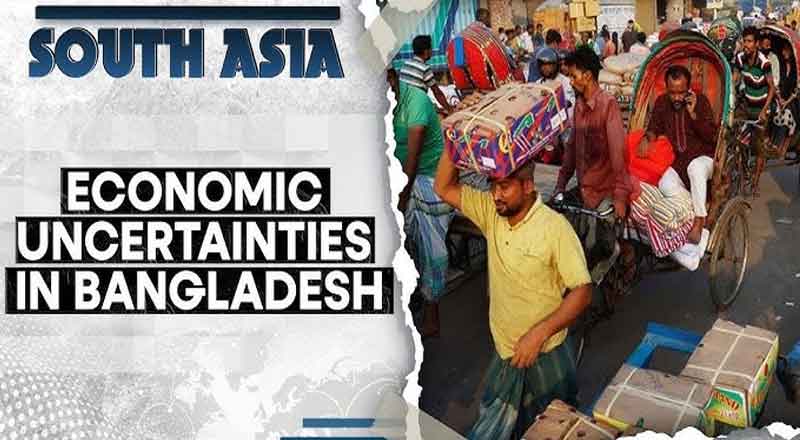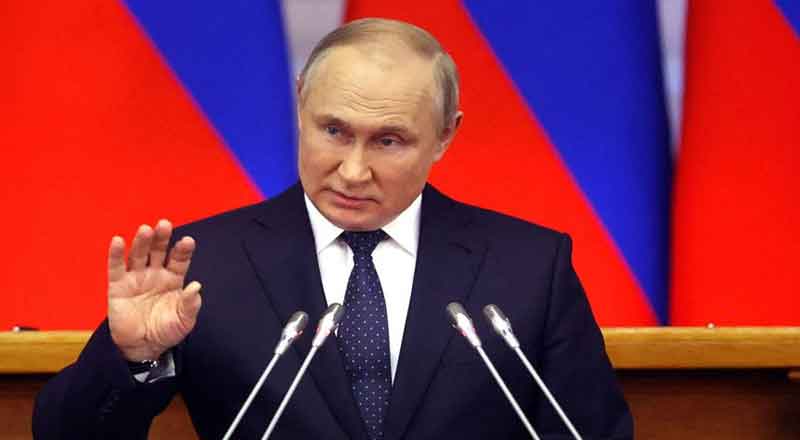Bangladesh, a once-strong South Asian economy, faces a spiralling crisis characterized by political turmoil, inflation, high debt, and a crumbling currency. With interim Prime Minister Muhammad Yunus at the helm following the ouster of Sheikh Hasina, Bangladesh now contends with a faltering textile industry, dwindling foreign reserves, and severe natural disasters. This confluence of challenges raises pressing questions: Could Bangladesh’s crisis mirror the Maldives’ recent economic woes? And if so, could India step in to assist?
Political Instability and Economic Consequences
The trouble for Bangladesh began with student-led protests across the nation, initially triggered by social and political grievances. These demonstrations culminated in the ouster of Sheikh Hasina, creating a vacuum that disrupted essential economic functions. Bangladesh’s reliance on its textile industry—which represents 80% of exports and 15% of GDP—has exacerbated the crisis, as the industry has been hit hard by the ongoing instability. Additionally, widespread flooding across 11 districts following heavy monsoon rains added further strain, displacing thousands and damaging critical infrastructure.
Amid this tumult, Bangladesh’s external debt reached $103.8 billion by mid-2024, representing a debt-to-GDP ratio of 37.9%. With the World Bank projecting a sharp deceleration of 4% in economic growth for FY25, investor confidence in Bangladesh is waning. A nation once praised for rapid economic gains now faces the real risk of bankruptcy, which could destabilize not only Bangladesh but also neighboring countries.
The Role of India as a Potential Rescuer
Given the worsening economic conditions, Bangladesh is likely to turn to India for support. India and Bangladesh have enjoyed a close relationship, particularly in sectors like energy and trade. Bangladesh relies on India for 1,160 megawatts of cross-border electricity, which helps power its struggling economy. Additionally, India has extended $8 billion in credit lines for Bangladesh’s infrastructure projects, covering railways, ports, and roads.
Trade between the two nations reached nearly $16 billion in 2022-23, underscoring the economic interdependence that could serve as a basis for potential assistance. With Bangladesh’s food and pharmaceutical sectors also heavily reliant on Indian exports, a partnership for aid could prove vital in stabilizing the nation.
Drawing Parallels: Bangladesh and the Maldives
Bangladesh’s predicament closely resembles the situation faced by the Maldives, where economic instability and political discord culminated in an appeal to India for aid. Maldivian President Mohamed Muizzu, who initially campaigned for “India out,” later turned to India for financial support amid his country’s economic crisis. India responded by extending budgetary support, including a $50 million Treasury Bill rollover.
This incident highlights India’s commitment to aiding South Asian allies in economic distress. Bangladesh’s situation, while complex, might lead to a similar outcome, with Bangladesh requesting financial assistance from India to stave off a larger crisis. However, this support could come with conditions to address economic mismanagement and social upheaval.
Challenges and Opportunities in India’s Assistance
While India has supported Bangladesh on various fronts, the current crisis is different. Bangladesh’s economy suffers from over-reliance on external debt, unchecked borrowing, and acute vulnerabilities to food and energy insecurity. According to Prabir De, a professor at New Delhi’s RIS think tank, Bangladesh’s debt dependency has put it at severe risk, with unrestrained borrowing threatening both economic stability and social order.
India, therefore, faces a challenging decision: offering assistance might require conditions and structural reforms to ensure Bangladesh addresses its vulnerabilities. This aid could include concessional financing, infrastructure support, and energy cooperation. India’s renewable energy industry could be a significant contributor, as Bangladesh seeks to diversify its power sources with 1,000 megawatts of renewable electricity imports and hydropower from Nepal and Bhutan, facilitated by India.
Bangladesh’s Path Forward
As Bangladesh’s economic crisis deepens, support from India could be a critical lifeline. Bangladesh’s dependence on India for energy, trade, and essential goods creates a natural pathway for assistance, similar to India’s support for the Maldives. However, stabilizing Bangladesh will likely require more than financial aid; it will necessitate a focus on economic reform, political stability, and disaster resilience.
India’s role in South Asia as a stabilizing force could be pivotal in helping Bangladesh avoid a full-blown economic collapse. As the crisis unfolds, India’s engagement could ultimately determine whether Bangladesh can reverse its trajectory or face the same economic hardships experienced by the Maldives. The stakes are high not just for Bangladesh, but for the broader stability of South Asia.
(With inputs from agencies)





